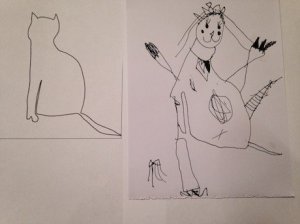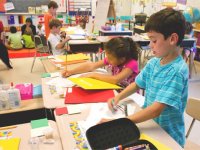The Key to Creative Classrooms
Through awareness, empowerment, practice, and methodology, teachers and parents can enhance their own creative skills as a way to begin modeling creativity for their children.
For several years, I visited public and private schools, incubators, and conferences in the U.S. and Europe looking for ways that we might bring creativity back into education. From Reggio Emilia in Italy to design thinking workshops in California to rural schools in the Midwest, I toured, observed, and interviewed staff and parents. During this experience, it became apparent that while most educators and parents believe creativity is important, very few know how to create an environment that stimulates and nurtures creativity.
We know that effective teachers are the most important factor contributing to student achievement. Teachers who understand, practice, and foster creativity provide the key to classrooms where student creativity and engagement flourishes. Parents who advocate for, understand, and foster creativity in children provide an added layer of reinforcement.
Though it would be wonderful to see more schools designed with natural materials, lots of skylights, organic lunches, cutting-edge technology, and an innovative curriculum, reality dictates something a bit more on the scrappy side. Luckily, creativity and scrappiness are familiar friends. Creativity thrives with practice and attention. It does not require big budgets and federal approval. While we wait for the skylights and cutting-edge technology to arrive, we can start making our classrooms more creative with a few simple steps in the right direction. Teachers, parents, and students can build their creativity through small, digestible, daily practices that over time make way for new habits and a new mindset.
Pursuing such a practice for at least 21 days will provide tangible evidence of what creativity looks and feels like for different individuals. Following, I offer some suggestions for helping teachers and parents understand, tap into, and practice their own creativity.
Awareness
There are many ties between mindfulness and creativity. The most practical way that one can be mindful and simultaneously boost his or her creativity is to become a better observer. Specifically, try to notice new things. This is an activity that can be done at any age level and using a variety of methods including sketching, note taking, attribute listing, or physical manipulatives.
Try this:
A teacher or parent might take a few minutes each day and note 4-5 new things observed. The effects of this simple practice can be very powerful.
Empowerment
Creativity takes courage. It requires failure (sometimes lots of failure). Creativity does not happen in a vacuum. To build creative confidence, it's important to work in an environment that is supportive of failing forward and where it's OK to look a bit silly at times.
Try this:
Adopt the language of the technology industry and just call the first attempt "version 1.0." That's because software never stops at 1.0. Developers create new code based on users' suggestions and complaints. Eventually, 2.0 arrives, then 3.0, and so on. Developing a language that accepts imperfection and builds space for failure allows students to think of failure as a means to success, rather than just being "wrong."
Practice
Creative muscle builds through practice. Start small and keep at it. Kirby Ferguson offers three steps to creativity: copy, transform, and combine. Copying is a natural part of our learning process and is one way to understand how a problem was solved. Many YouTube videos are remixes of pop songs. Combinations can be as simple as combining ingredients in the kitchen or figuring out a way to combine two physical objects into a new invention.

Try this:
Copy simple line drawings or a favorite work of art. Remix a mathematical concept as the lyric to a popular song. Combine two subjects into one lesson (such as math and history). In my How to Practice Creativity TEDx talk, I suggest some ideas about how to practice creativity every day and why it's so important.
Methodologies
Finally, there are several problem-solving methods that actively promote creativity. Design thinking, creative problem solving, and project-based learning are all methodologies that teachers and parents can use to stimulate creative thinking. Each of these methods requires students to pursue various options to open-ended questions and create a unique solution. There is no "right" answer to what students create.
Try this:
Practice framing a problem into a "How Might We . . . ?" statement. For instance, "How might our sixth-grade class create a solution that encourages our community to conserve more water?"
It is unlikely that there will be a federal mandate for creativity in schools in the near future. This doesn't mean that creativity isn't important. In fact, the issues we are facing today -- including population, health, and energy -- are going to require more creative problem solving and collaboration than ever before in history. The journey begins with a few small steps.
How do you foster creativity in your classroom or school? Please share in the comments below.
